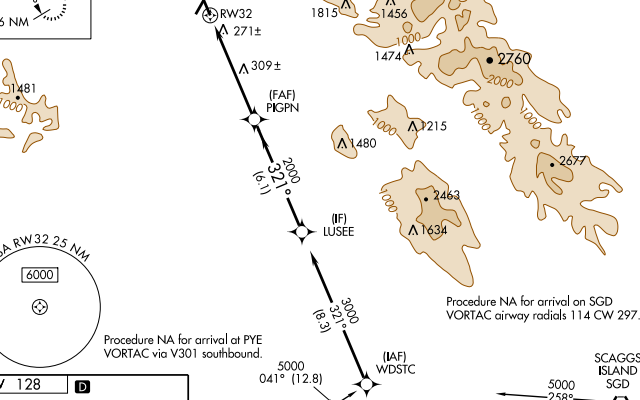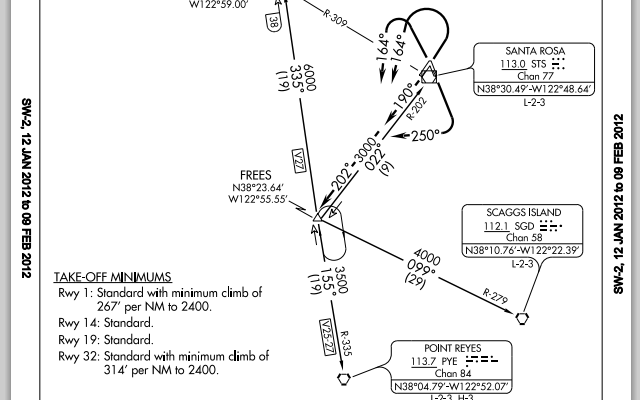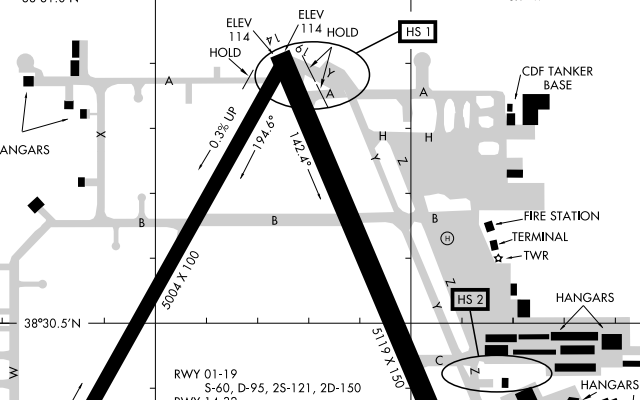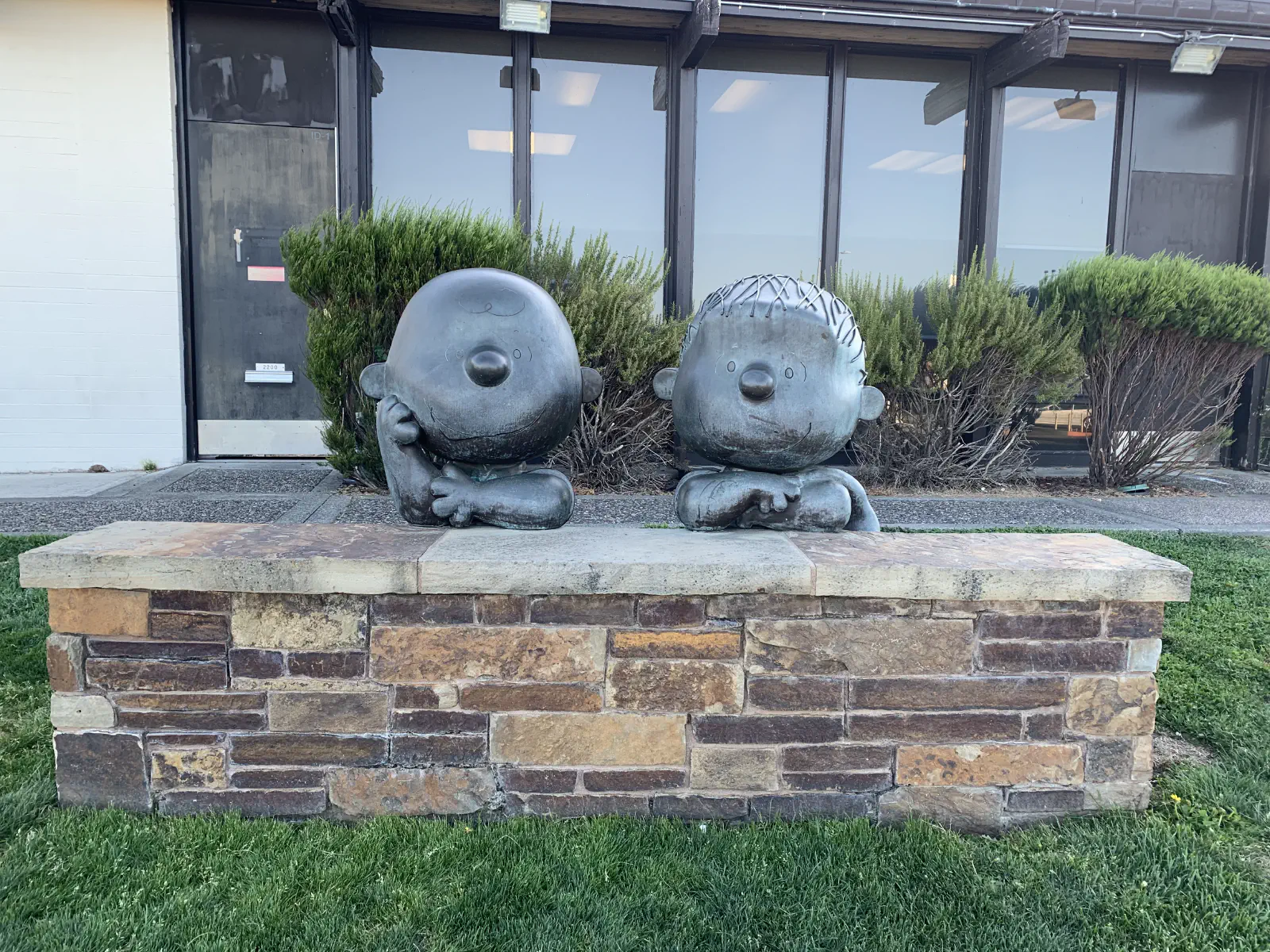Peanuts Approach
November 96988 proceed direct Woodstock, cleared RNAV GPS Runway 32 approach.
No, we weren’t flying in upstate New York, we were flying into the Charles M. Shulz airport (KSTS) in Santa Rosa, California. Let me take you back to last night when I got a text message from my flight instructor suggesting we plan a trip up to Santa Rosa to practice some enroute work and new approaches. As I was reviewing the available procedures, I was delighted to see the many references to Peanuts characters in the waypoints. In March of 2000, the Sonoma County Airport was renamed after long time resident and comic strip artist Charles M. Shulz. The fine folks at the FAA have obviously gotten behind the idea by naming several waypoints after some of my favorite Peanuts characters. More on that in just a bit.
Unlike last week, the weather this weekend has been clear, warm and gorgeous. I’m pretty sure my friends are going to get tired of me wishing for cloudy skies. Thanks to Foggles, I’m still able to practice my instrument work without instrument meteorological conditions (IMC) so Martin and I met up at 8am for our trip to Santa Rosa. After discussing our plans, I filed an IFR flight plan as KSQL → SABLO → SGD → KSTS. This route had us crossing over to Oakland and then proceeding north to Santa Rosa. Once we had the plane started and completed our run-up checks, San Carlos ground gave us our clearance:
November 96988 cleared Santa Rosa, maintain runway heading then radar vectors Sausalito, Sausalito 330 radial to BURDE, Santa Rosa 141 radial, LUSEE. Climb to 2000’ expect 5000’ 5 minutes after departure. Squawk 4575 expect Norcal departure on 135.65.
You may notice that aside from my departure and destination points, the clearance provided by ATC was nothing like what I had filed. In congested airspace like we have in the bay area, I’m learning that this is not unusual. The controllers will put you on a route that allows them to safely manage the flow of traffic into and out of the surrounding airports. I certainly don’t have a problem with that.
With my assigned route plugged into the GPS, we were ready for IFR release and
soon up in the sky and I was behind the Foggles. We were quickly cleared up to
5000’ and then vectored for most of our course making the GPS mostly redundant
for our enroute procedures. While enroute, I worked on maintaining my assigned
altitude with a focus on not going below it. For most of the trip I was able to
maintain within 50’ of my assigned altitude and only dipped below it a few
times. We’ll see how well that holds the next time I’m in real
IMC.
As we approached Santa Rosa, we picked up ATIS and requested the RNAV (GPS) RWY 32 Approach. This gets us to where our story began, I was cleared direct to Woodstock (WDSTC) which is the initial approach fix (IAF) for the approach. The fun continued with the approach as I descended to Lucy (LUSEE) and finally headed to Pigpen (PIGPN).

Growing up my favorite stuffed animal was Snoopy, a childhood treasure that’s still at my mom’s house. Flying an approach with fixes named after Peanuts characters was a real treat. Using the LPV capabilities of my GPS, I was able to follow the glideslope down close to Pigpen but as I got closer to the airport I tended to over correct and started “chasing the needle,” I’m getting better but still need to work on making small corrections closer to the airport/ground. As we approached pattern altitude, the controller had us “circle to land” on runway 14 so I didn’t follow the glideslope to it’s final conclusion.
On the ground at Santa Rosa we taxied back to Runway 14, got the plane set up, and requested our clearance back to San Carlos.
Cleared San Carlos via FREES Six Departure, Point Reyes, Victor 27, Point Reyes 1 Arrival, climb 5000’ contact Norcal on 125.85 squawk 4530.
The FREES Six Departure is a published Standard Instrument Departure (SID) that makes copying clearances a lot easier. A SID consists of a set of instructions that are published ahead of time so you don’t have to write down every point on the route and the controller doesn’t have to read them out. As you can see below, this departure includes all 4 runways at Santa Rosa.

I’m starting to learn that experience is huge part of the instrument flying business. The departure runway is not part of the IFR clearance but in this case the runway used impacts the procedure for the departure. When departing runway 14 you make a right turn to a heading of 250° to intercept the 022° radial from FREES intersection. When departing runway 19 you climb on the runway heading of 190° proceeding directly to FREES.
We landed on runway 14 and we were sitting at the end of runway 14 so I set the GPS up for a runway 14 departure. At Santa Rosa, you enter runway 14 and runway 19 at the same location so I was really sitting at the end of runway 14 and runway 19. Fortunately my instructor made note of this and asked me what I would do if we were cleared for runway 19 instead of 14. After a brief pause, I was able to quickly change the departure procedure to 19 and then back to 14. The shared entry point for runway 14 and 19 has caused enough problems that the FAA identifies it as a “Hot Spot” on the airport diagram (HS 1).

Like I said, experience is a huge part of this business and sure enough when we were cleared for departure, we were cleared for runway 19. No problem! Thanks to a great instructor I was ahead of the game and quick to update my departure procedure and we were quickly climbing to 5000’ and on our way back to San Carlos.
I could tell it was a beautiful day and I envied my flight instructor while he got to enjoy the view of Point Reyes, the Farallon Islands, the Golden Gate bridge and San Francisco on a beautiful sunny day but I was also content to hone my skills flying the plane, navigating and communicating all while “under the hood.”
I’m looking forward to another trip to Santa Rosa when I’ll hopefully be cleared “direct SNUPY”.
